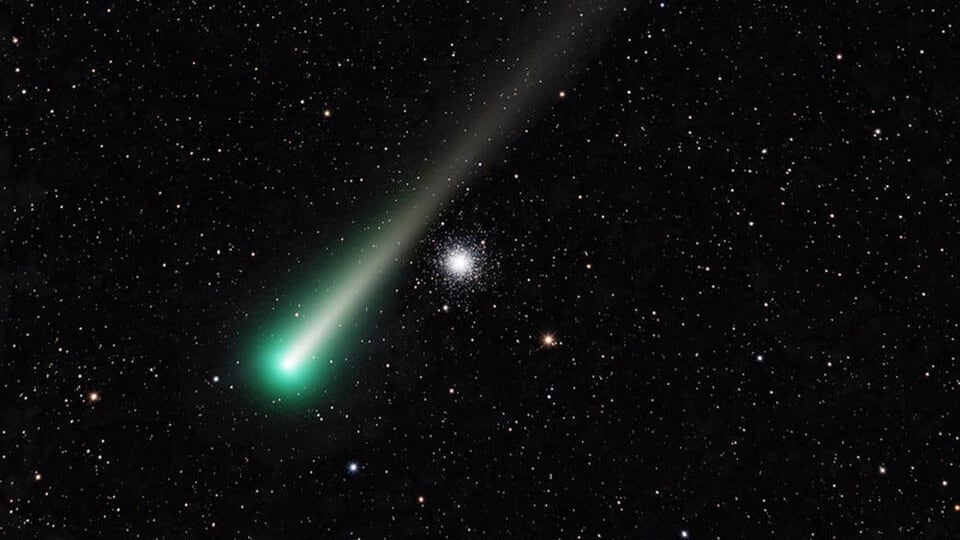The discovery this past January of Comet C/2021 A1, better known as Comet Leonard, was a startling but welcome find: Comet Leonard was heading in our direction on its way around the sun, which meant that by years’ end it would be a bright, visible rock streaking through the sky. There were suspicions that Leonard would easily be the brightest object to fly past us this year, and likely visible by the naked eye.
Those suspicions turned out to be true. Leonard makes its closest pass by Earth on Sunday, Dec. 12 as it barrels through space at more than 158,000 miles per hour. It will be a mere 21.7 million miles away (distance is relative!). This weekend is the most opportune time to find some time to perch up under the clear sky and look for the icy bugger as it’s torched by the heat of the sun.
Professional and amateur astronomers alike have already been snapping a ton of amazing shots of the comet as it comes our way. But recent observations show Comet Leonard is actually acting a little fickle as it nears the sun. It’s not brightening the way it ought to be, and some scientists believe it’s a sign the object is on the verge of splitting up and exploding into a million little pieces.
ADVERTISEMENT
“Why it's fading, there are all kinds of hypotheses,” University of Maryland astronomer Quanzhi Ye told Space.com. “The simplest and the most obvious one is something unhealthy is happening to the comet.”
Comets are incredibly weird objects. While the heat of the sun can be a devastating force, Comet Leonard might also be poorly tolerating the gravitational tugs of the sun or nearby planets. It might have entered the solar system with a fractured or delicate structure.
Even if Lenny survives this trip, it will almost certainly be the last time humans have a chance to witness it. The European Space Agency tweeted yesterday that the comet will “likely leave the solar system for good on its way out,” after its close pass by the sun on Jan. 3.
If you want to get a glimpse of the comet before it leaves us forever, try looking for it on the morning of Dec. 12. If you’re too busy this weekend, you might get another chance to spot it on Dec. 18 as it swings by Venus—assuming it’s still alive by then. If you can’t get out of the house, check out the Virtual Telescope Project’s livestream of Comet Leonard.






